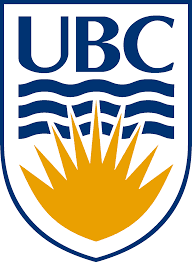Date & Time: Wednesday, May 11th, 2022 @ 2pm ET
Location: Zoom - https://yorku.zoom.us/j/96680804892?pwd=OXIwblJCSXFsVzBSY1NRV2ZYU2JSdz09
Meeting ID: 966 8080 4892
Passcode: 428475
Featured Speakers: Simone Hagey, Grace Bischof, Nick Zonta
Simone Hagey
Simone is an Astronomy MSc student at the University of British Columbia working with Dr. Aaron Boley. Her research involves searching for evidence of long-term period changes in exoplanet transits. She completed her undergraduate degree in physics at the University of Saskatchewan where she was involved in the space design team working on a cube satellite project and mars rover prototypes. Simone has a lot of hands-on experience working with telescopes and designing and building instrumentation and is excited to be expanding her research experience to include theoretical approaches. In her spare time, she enjoys climbing, hiking, camping, and biking.
Abstract:
Hot Jupiters (HJs) are gas giant planets that orbit their host stars with periods less than about 12 days. The proximity of HJs to their host stars leads to tidal interactions that can affect their long-term orbital evolution. Specifically, many HJ orbits could be shrinking gradually over time due to the transfer of angular momentum from the planet to the host star, potentially leading to planetary engulfment (Levrard et al., ApJ, 692; Matsumura et al. 2010, ApJ, 725). Careful observations of planetary transit centres over decade timescales should be sufficient to reveal direct evidence of orbital decay, appearing as a quadratic timing variation. Though many systems of interest have been suggested, only WASP-12 b has been confirmed to be spiraling into its host star (Patra et al., 2017, AJ, 154). In this work, we analyze the wealth of citizen scientist observations in the Exoplanet Transit Database (ETD) to demonstrate that such observations can be used to identify HJ systems that are strong candidates for exhibiting observable orbital evolution. Additionally, we present the impact of future observations from the Twinkle space telescope on confirming these findings.
Nick Zonta
Nick is a master’s student under Dr. Regina Lee in the Nanosatellite Laboratory at York University. He completed his BEng in Space Engineering also at York University. Nick has been a part of Dr. Lee’s lab to work on small-satellite payloads since 2018 as a research assistant. These include payloads on the DESCENT CubeSat mission and the upcoming ManitobaSat CubeSat mission. His current research is focused on thermal control design for space-based photonics payloads, specifically the Optical Phased Array (OPA) in collaboration with Honeywell.
Abstract:
The thermal control and model-based analysis provide the essential means to control the temperature gradient of an optical photonics chip for both in-space and in-atmosphere applications. The Honeywell Optical Phased Array (OPA) project provides a challenging investigation to design an independent thermal control system for the micro-photonics payload.
The platform employs the use of passive structures for thermal crosstalk mitigation, but those have proven insufficient on their own to maintain a desired operational temperature at steady state. In addition, the platform lacks any conventional packaging; hence this project aims to, under the current iteration of the design, integrate a robust thermal controller to keep the OPA at a setpoint temperature during operation. A detailed thermal model of the OPA was synthesized using COMSOL Multiphysics software. The models demonstrated that a constant setpoint results in consistent and proportional low levels of thermal crosstalk that are mitigatable in the control software.
Based on the resultant temperatures, a thermal PID feedback software controller and supporting integration hardware were designed and tested to reduce temperature overshoot and settling time during testing and nominal operation. The system for the OPA includes both a solid state thermo-electric cooler (TEC) module, and the custom PCB interface between them. The PCB was designed to optimize the thermal pathway below the OPA to the TEC and the TEC was selected based on the OPA dimensions and simulated active temperature profiles. The controller was tuned based on the simulated and experimental results and the final stages of optimization are currently still in progress.
Grace Bischof
Grace Bischof is a master’s student at York University working in the Planetary Volatiles Lab under John Moores. Her work involves water-ice clouds as seen during the Phoenix Mission on Mars – specifically, constructing a record of water-ice clouds throughout the mission by modelling the air temperature obtained by the MET instrument. Grace is also part of the Mars Science Laboratory mission, completing science operations for the Environmental Science Theme group.
Abstract:
The Phoenix Mars mission operated in the Martian northern arctic for 151-sols, monitoring the local meteorology. Water-ice clouds were observed frequently throughout the mission, using both the lidar and imager on board the lander. Both instruments were used only intermittently, and as such, the cloud data were temporally constrained to when the instruments operated. This work constructs a record of water-ice clouds throughout the Phoenix mission by examining the radiative contribution made to the surface energy balance by clouds above the landing site. This is achieved by modelling the air temperature obtained by the 2 m air temperature sensor. Clouds radiating between 0 and 30 W m-2 are consistent with the MET record, with variability throughout the mission. This analysis indicates that clouds were present much earlier in the mission than previously recorded. In addition, when paired with corresponding water-ice optical depths retrieved from the Phoenix lidar, an examination of the radiative properties of the clouds is completed.







